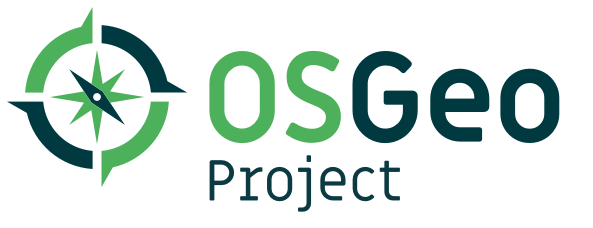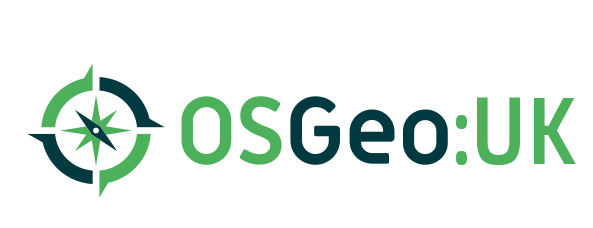GeoServer Blog
GeoServer is now on Twitter
GeoServer now has an official twitter account, thanks to Simone for setting this up!

If you have a twitter account, please follow our @GeoServerO profile to stay in touch!
GeoServer 2.16.2 released
| We are pleased to announce the release of GeoServer 2.16.2 with downloads (war | zip), documentation (html | pdf) and extensions. |
This is a stable release recommended for production systems.
Improvements and Fixes
This release includes a number of improvements, including:
- Support for vector custom dimensions (in addition to time and elevation)
- Allow limiting the number of concurrent jobs in the importer extension
- Default style descriptions wording improvement (as they are visible in capabilities documents)
Fixes included in this release:
- The REST API fixes regarding datastore and feature type handling (see notes for details)
- Fixed 100% CPU usage at idle on data directories with tens of thousands of layers
- Don’t delay startup on an unresponsive cascaded WMS server
- Make sure to truncate fully tile caches with parameters
- Make GWC caching kick in also when using local workspaces along with non qualified layer names
- And various others!
For more information check the 2.16.2 release notes.
Community Updates
For developers building from source, our community modules are a great place to collaborate on functionality and improvements.
- The templated JSON-LD output format, supporting both simple and complex features, has been backported to 2.16.x. We are grateful for the sponsorship of the French geological survey – BRGM and the French environmental information systems research center – INSIDE, which made its development possible.
About GeoServer 2.16
Features, presentations and reference material on the 2.16 series:
- State of GeoServer 2.16 (video|slides)
- GeoServer Feature Frenzy 2019 (video|slides)
- New SLDService extension using data classification for style generation
- New authentication key extension available
- Server status page now includes system status details
- GDAL 2.x binaries are now used for GDAL image formats along with OGR WFS output and WPS output formats
- Release Notes ( 2.16.2 | 2.16.1 | 2.16.0 | 2.16-RC1 )
GeoServer 2.15.4 Released
| We are pleased to announce the release of GeoServer 2.15.4 with downloads (zip | war), documentation (html) and extensions. |
This is a maintenance release and is a recommended update for existing installations. This is the last scheduled 2.15 maintenance release and we recommend planning your upgrade to 2.16.
This release is made in conjunction with GeoTools 21.3 and GeoWebCache 1.15.3. Thanks to everyone who contributed to this release.
For more information see the GeoServer 2.15.4 release notes.
Improvements and Fixes
This release includes a number of improvements, including:
- Improve ncWMS extension to support time list and time range.
- Truncate of tiles fixed use of parameters.
- Upgrade of XStream and Jackson libraries.
A number of fixes are also present:
- Fix cascading WMTS use of credentials
- ncWMS extension now respects no-data values.
- Importer fixed to respect shapefile charset encoding.
About GeoServer 2.15 Series
Additional information on the 2.15 series:
- Layer service settings allow WFS, WMS, WPS to be enabled on a layer by layer basis.
- GeoFence internal server extension a new approach to access control
- Style Editor supports auto-complete using control-space shortcut.
- SLD REST Service extension supports generation of thematic styles for vector and raster content.
- WPS vendor operation GetExecution Status and Dismiss, management of running processes.
- Java 11 can now be used, see Running on Java 11.
- JAI-EXT operations are now enabled by default.
-
Release notes (2.15.4 2.15.3 2.15.2 2.15.1 2.15.0 2.15-RC 2.15-M0)
GeoServer 2.16.1 released
| We are pleased to announce the release of GeoServer 2.16.1 with downloads (war | zip), documentation (html | pdf) and extensions. |
This is a stable release recommended for production systems.
Note: Our builds detected a change in Oracle JDK 8u221 URL handling; this release was made with 8u202 as a result. Future releases will be made using OpenJDK.
Improvements and Fixes
This release includes a number of improvements, including:
- The REST API now supports configuring the WMTS
- New hideEmptyRules LEGEND_OPTION to hide rules not matching any features
Fixes included in this release:
- SLDService generated raster classifiers are not overwriting the default style any longer
- Monitoring extension fixed to respect GEOSERVER_AUDIT_PATH setting
- Cascaded WMTS now makes use of provided credentials
For more information check the 2.16.1 release notes.
Security Updates
Please update your production instance of GeoServer to receive the latest security updates and fixes.
If you encounter a security vulnerability in GeoServer please respect our responsible disclosure policy.
Community Updates
For developers building from source, our community modules are a great place to collaborate on functionality and improvements.
- ncWMS GetTimeSeries now supports time ranges with period and excludes nodata from results
- hz-cluster improved synchronization events
About GeoServer 2.16
Features, presentations and reference material on the 2.16 series:
- State of GeoServer 2.16 (video|slides)
- GeoServer Feature Frenzy 2019 (video|slides)
- New SLDService extension using data classification for style generation
- New authentication key extension available
- Server status page now includes system status details
- GDAL 2.x binaries are now used for GDAL image formats along with OGR WFS output and WPS output formats
- Release Notes ( 2.16.1 | 2.16.0 | 2.16-RC1 )
CITE Test Automation Request for Proposal
GeoServer Project Steering Committee is seeking a solution for automated CITE TEAM Engine tests for build.geoserver.org.
If you or your organization is interested in this work please respond to the geoserver-devel email list with your interest by the end of November. Applicants are welcome to email geoserver-devel list, or attend bi-weekly GeoServer meeting, with any questions or clarifications of requirements.
For details, including detailed requirements, see GSIP-176 fundraising, maintenance activity wiki page, and prior blog post.
Schedule Update: Please email geoserver-devel if you are interested in this activity by the end of November, we will evaluate proposal during GeoServer Meeting December 10th.
Clarrifications
There are three approaches discussed:
- cite command line: our previous scripts made use of a the cite engine to run tests on the command line.
- cite engine service: The new cite engine has a rest-api, so the testing script could use CURL commands to ask the engine to run the tests
- cite engine docker: The cite engine is also distributed as a docker image, if that makes it easier to manage the rest-api approach
Any of these approaches can be viable, or you may have additional ideas. The challenge (after our last experience) is setting up something that can be maintained.
Notes:
- The WFS-T tests required a database to run, the tests created a couple of tables each time (since the transaction request modifies the content)
Thanks to sponsors
We would like to thank everyone who has supported this activity via sponsorship and donation. Special thanks OSGeo along with activity sponsors Gaia3D, and OSGeo:UK for help making this possible.


